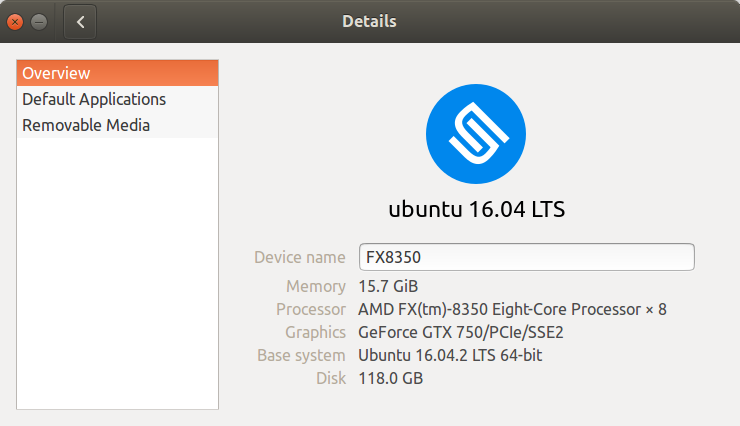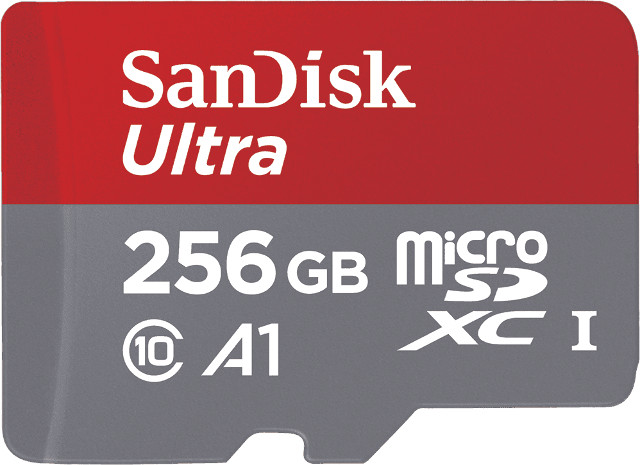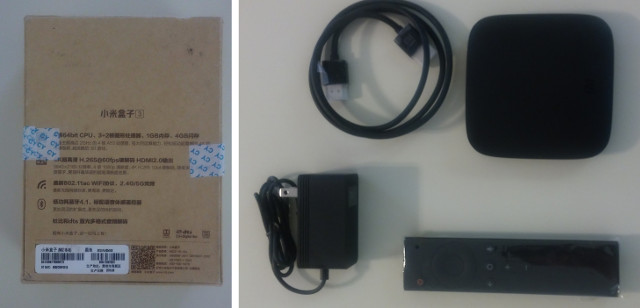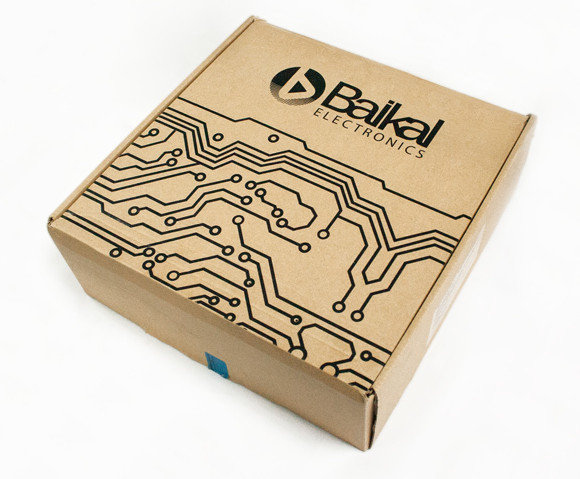In case you’ve installed another operating system like Ubuntu on CHUWI Lapbook 14.1 laptop, and want to re-install Windows 10, CHUWI has released Windows 10 firmware, drivers, and LapBook 14.1 “BIOS” in their forums. So I’ve re-installed Windows 10 on the laptop using the Windows 10 image. You’ll need to download the 8 files CHUWI LapBook 14.1 Windows.part1.rar to CHUWI LapBook 14.1 Windows.part8.rar, and after extracting them you should get a “CHUWI LapBook 14.1 Windows” directory with all necessary files to reinstall Windows. The files take 8GB, so it may not fit on all 8GB flash drives, and you may need to use a 16GB or greater drive. I just copied the files to an 64GB flash drive formatted with NTFS, insert the drive into the USB 2.0 port of the laptop, and I could start the installation process at boot time. However, it quickly failed as it tried to […]
How to Upgrade to Linux 4.8 in Ubuntu 16.04.2
I had read from several news sources that Ubuntu 16.04.2 would come with Linux 4.8. My system was upgraded from Ubuntu 16.04.1 to Ubuntu 16.04.2 this week-end, but I still had Linux 4.4.
|
1 2 3 4 5 6 7 |
cat /etc/lsb-release DISTRIB_ID=Ubuntu DISTRIB_RELEASE=16.04 DISTRIB_CODENAME=xenial DISTRIB_DESCRIPTION="Ubuntu 16.04.2 LTS" uname -a Linux FX8350 4.4.0-62-generic #83-Ubuntu SMP Wed Jan 18 14:10:15 UTC 2017 x86_64 x86_64 x86_64 GNU/Linux |
So I wondered why that was, and eventually found my answer on Reddit thanks to EndofLineLF user: If it isn’t a new 16.04.2 installation then you won’t have newer kernel. If your install started as 16.04 or 16.04.1 then with all updates installed “lsb_release” will display 16.04.2 as version because that’s what you have. The switch to HWE (Hardware Enablement Stack) was never automatic. So if you want newer kernel you have to install it manually. https://wiki.ubuntu.com/Kernel/RollingLTSEnablementStack#Packages-1 sudo apt-get install –install-recommends xserver-xorg-hwe-16.04 This will also install the new HWE kernel because it is recommended for that package. Upgrading to the new kernel is completely optional, and Linux 4.4 will still get security updates, but I did […]
SD Specifications 5.1 to Introduce App Performance Class (for Random I/O) & Logo
SD cards used to store media data only, for example photos and videos in your camera or smartphone, but with the introduction of “Adoptable Storage” in Android 6.0 you can now run apps directly on a micro SD card, and many development boards rely on (micro) SD card to run the full operating system. The difference is important, as with media storage, the raw sequential read and write speeds are the most important, as large files are created and accessed, but for apps and operating systems many small read and write operations such as databases access take place on the card, so random IO performance becomes much more important. So far, the SD card specifications would only report sequential performance with different classes, and for example for are often recommended to use “Class 10” SD cards on Raspberry Pi, which does not clearly indicates the random IO performance. SD Specifications […]
Xiaomi Mi Box (US) Android TV TV Box Review
Introduction The Mi Box is the first Xiaomi product I have used. I received it beginning of December and have been using it regularly since then. I have received 3 updates which went through uneventfully. I was very pleased with this box. I ended up getting one for my in-laws and one for my 4 year old sons bedroom. The UI worked as expected. I have an Nvidia Shield Android TV, and the Mi Box complements it very well. Having Plex Server running on the Shield and Plex on the Mi Box is pretty fantastic to easily share content. Not to mention way more cost effective than putting a Shield in every room. What’s Inside The build quality is good. The power supply puts out 5.2v which is not typical. I do wish it had more USB ports. A single USB is inadequate. I found myself swapping USB out frequently […]
Review & Quick Start Guide for Khadas Vim Pro Development Board with Ubuntu 16.04
Khadas Vim is the only Amlogic S905X development board I’m aware of. There are 4 or 5 versions of the board, but currently only two models are sold: Khadas Vim with 8GB flash and single band WiFi + BLE 4.0, and Khadas VIM Pro with 16GB flash, and dual band WiFi + BLE 4.2. SZWesion, the company behind the board, has sent Khadas Vim Pro for evaluation. Today, I’ll take a few pictures of the board and its accessories, and report my experience playing with Ubuntu 16.04.2 on the board. They’ve also released Android, LibreELEC, and dual boot Android/Ubuntu (for Vim Pro only) images, which you can find in the firmware resources page. Khadas Vim Pro Unboxing and Photos My parcel included Khadas package that looks like a book, an HDMI cable, and the same IR remote control sent with GeekBox, the first board made by the company, and powered […]
Dolby Digital (AC3) US Patent Has Expired on February 1, 2017
Many TV boxes cannot play videos with Dolby Digital (AC3 ) audio because they lack the license, except if you use software like Kodi that downmixes the audio, but most apps won’t, and MX Player developers had to remove AC3 support from the Android app previously. But based on a forum post by Popcorn Hour, Dolby Digital AC3 US patent (that one?) has expired at the beginning of this month, so they can legally enable AC3 downmixing in their TV box that previously lacked the license including Popcorn Hour A410U/VTEN-U/A-500U/A-500 PRO-U. That’s probably good news for other TV boxes too, as going forward, there’s no need to have Dolby Digital license to play AC3 content. Hopefully, apps and firmware images will be updated to reflect this change. You’ll still need a license for newer formats like Dolby True HD and Dolby Atmos however.
Baikal T1 BFK 1.6 MIPS Development Board Tested with OpenWrt
Baikal Electronics is a Russian fabless semiconductor company specializing in ARM and MIPS-based SoC, and we’ve already covered their Baikal T1 MIPS SoC announcement, as well as Tavolga Terminal TP-T22BT Debian 8 All-in-One Computer based on the processor. The company also have Baikal T1 BFK 1.6 development board, which does not appear to be publicly available yet, but one member of Habrahabr.ru forums got hold of one sample, and tested the OpenWrt SDK in Debian 8 host computer. First, we’ll have a look at the hardware they received. I don’t have the full specs of the board, but we’ll learn a little more below, in the meantime we can see two USB ports, Gigabit Ethernet ports, a 10GbE SFP cage, an mPCIe slot (I think), and two DB9 connector, as well as a bunch of other headers and connectors with SATA, GPIO, UART, I2C, SPI… I’ve then downloaded Baikal T1 BSP […]
22€ Olimex ESP32-EVB ESP32 Development Board Features an Ethernet Port and Relays
We already have a good choice of ESP32 development boards, but none of the ones I’ve seen make use of the Ethernet MAC interface found in Espressif ESP32 SoC. Olimex has changed that with their ESP32-EVB featuring ESP32-WROOM32 module as well as one Fast Ethernet port and two relays. Olimex ESP32-EVB specifications: Wireless Module – ESP32-WROOM32 module with 802.11 b/g/n WiFi and Bluetooth LE Wired Connectivity – 10/100M Ethernet RJ45 port External Storage – micro SD slot Relays – 2x 10A/250VAC relays Expansion 40-pin GPIO female header (2.54mm pitch) UEXT connector for sensors and modules Misc – 2x user buttons Power Supply 5V power jack LiPo charger and step up converter allowing ESP32-EVB to run from LiPo battery The company still have to write software samples, and do some testing to make sure the board work before going into mass production. Once everything is cleared, the board will be sold […]












